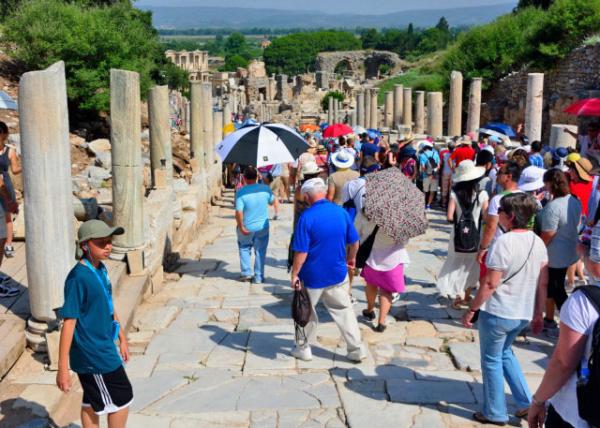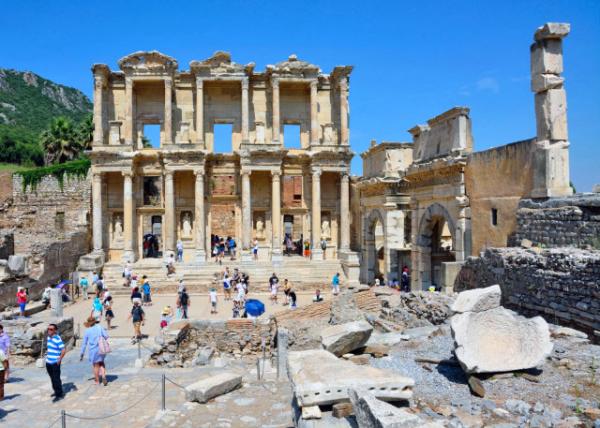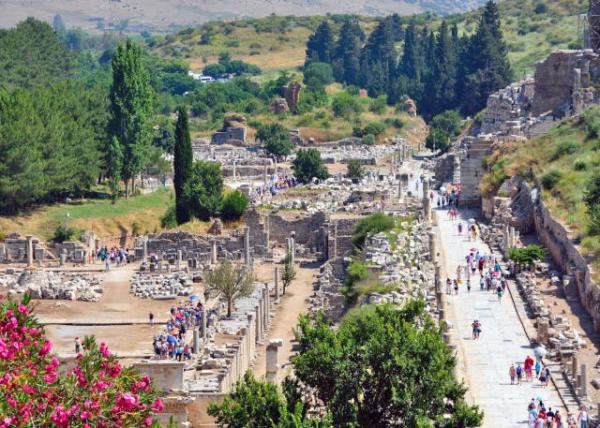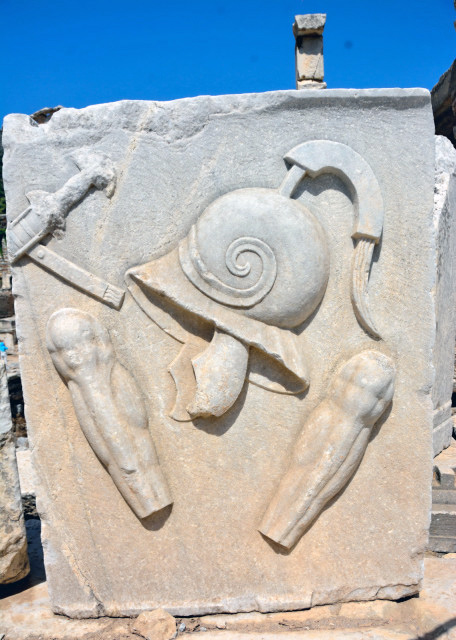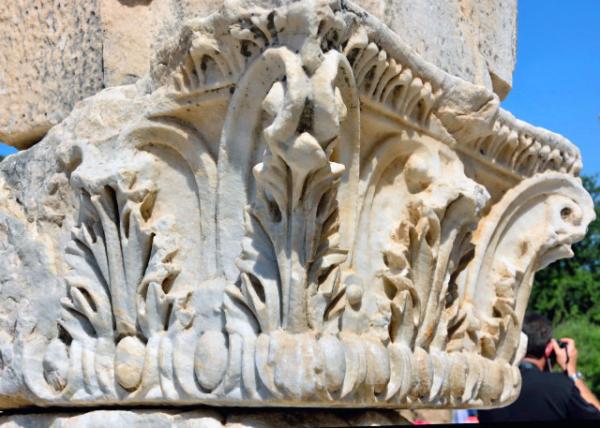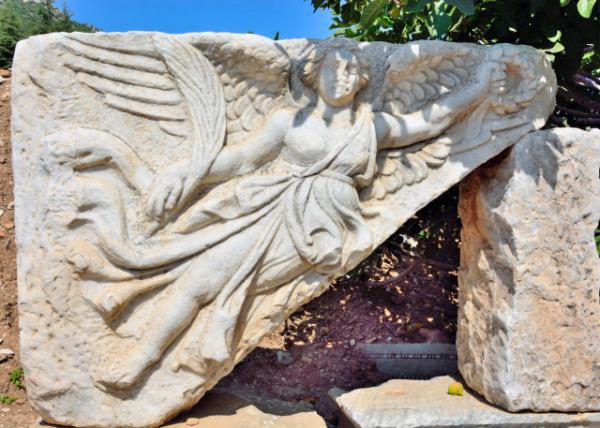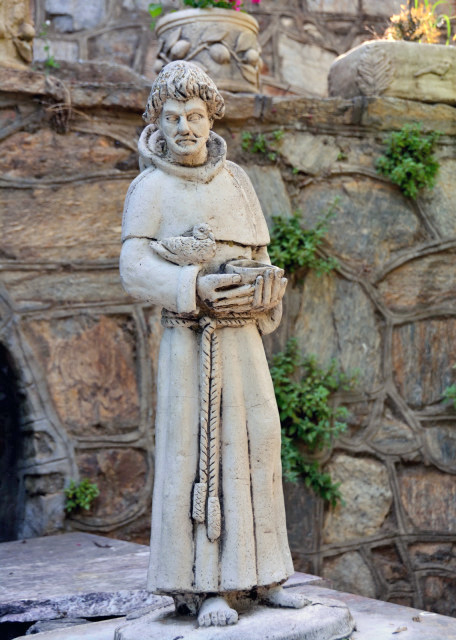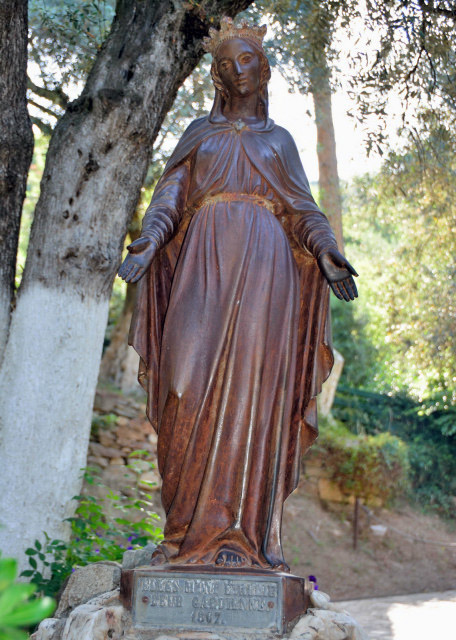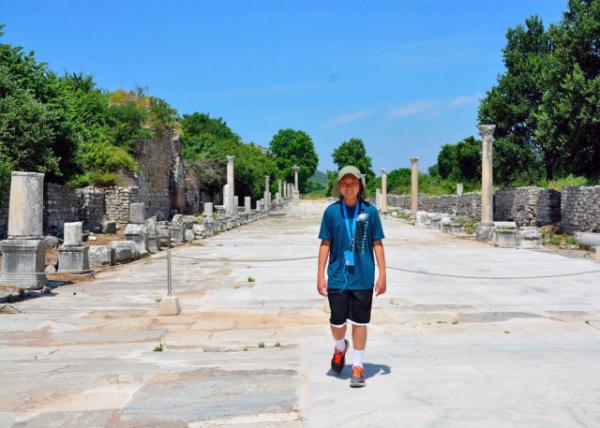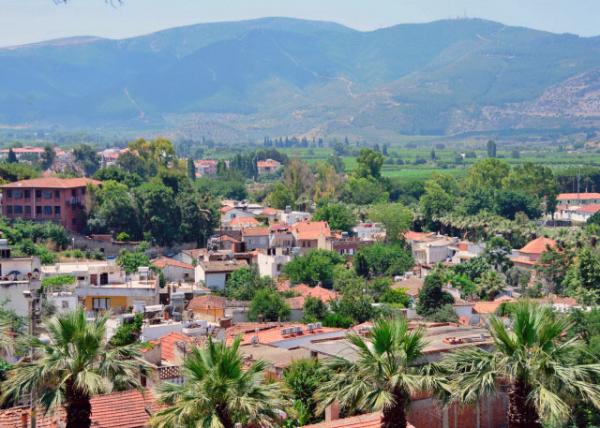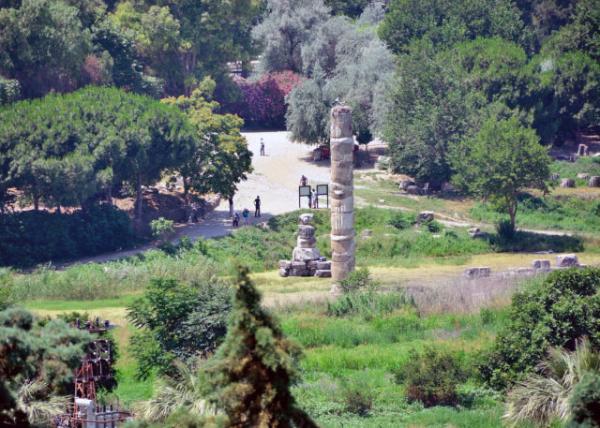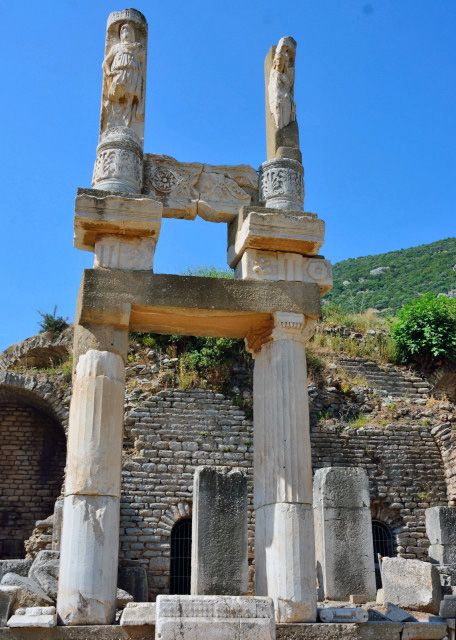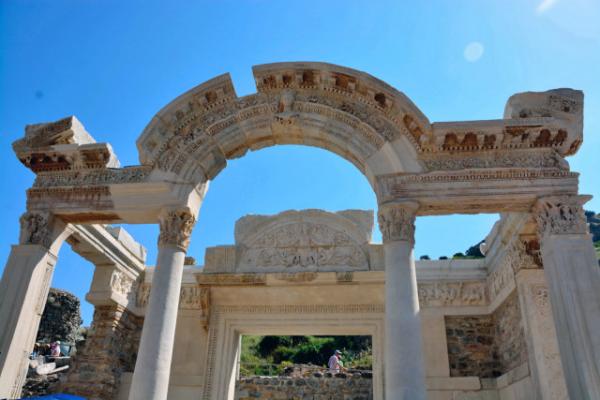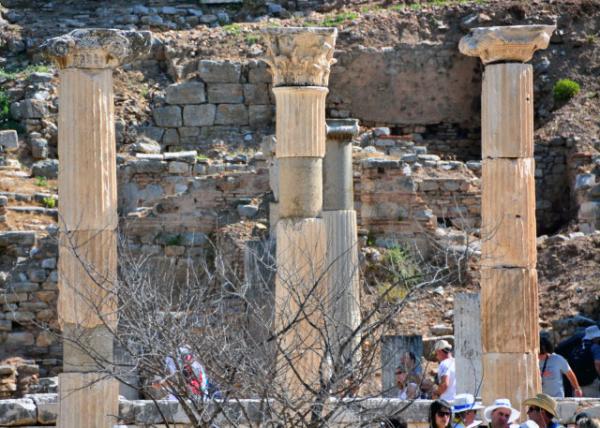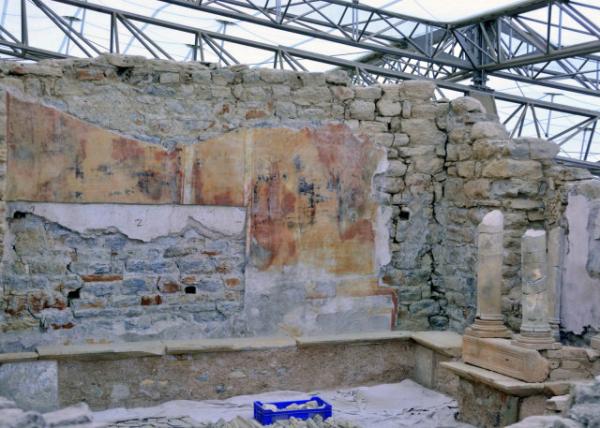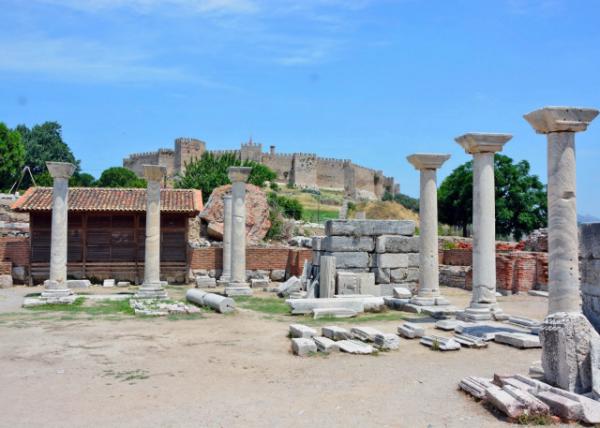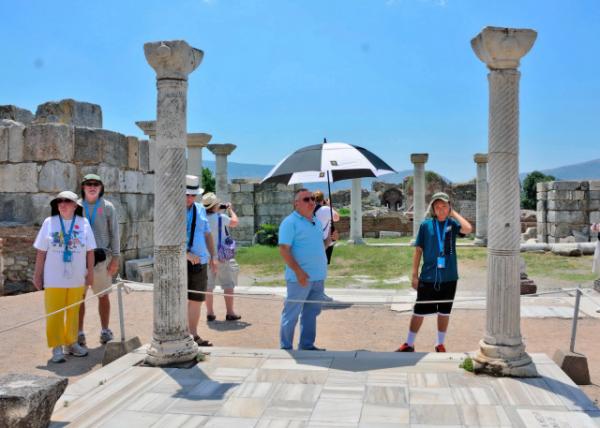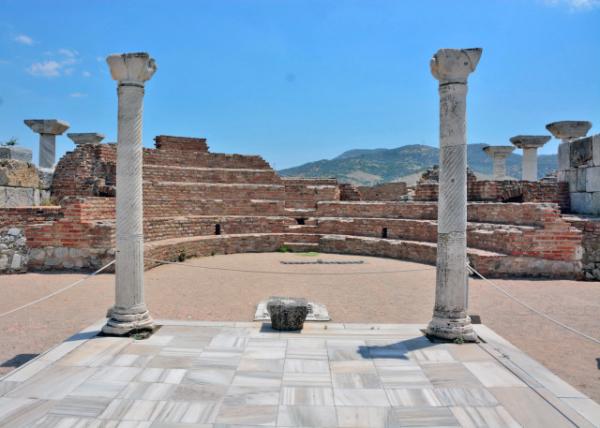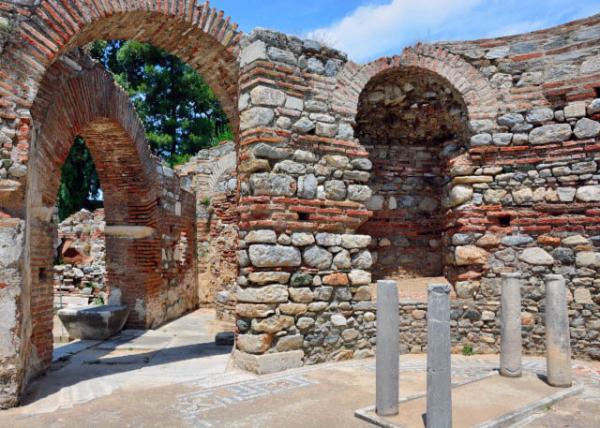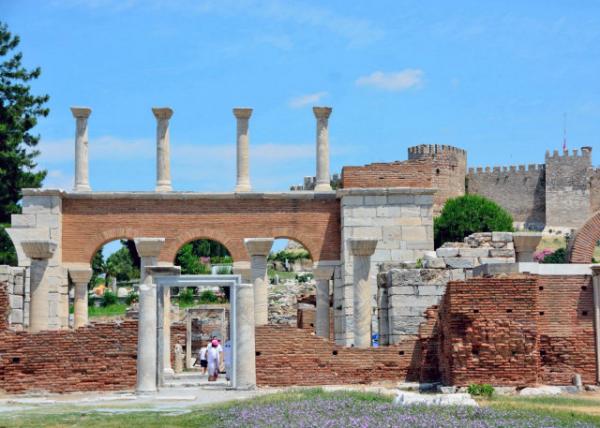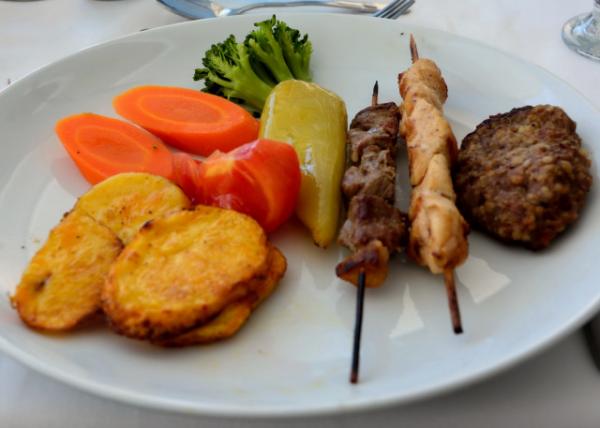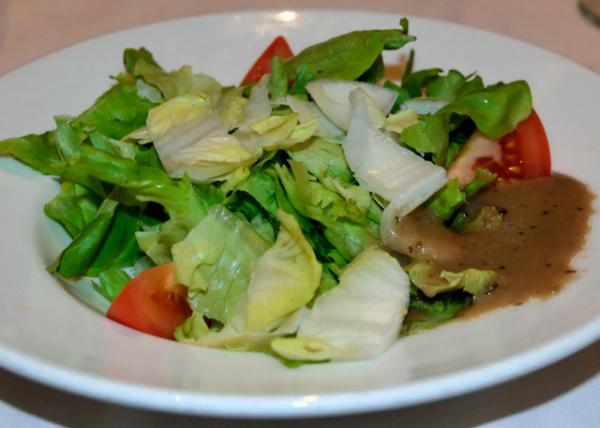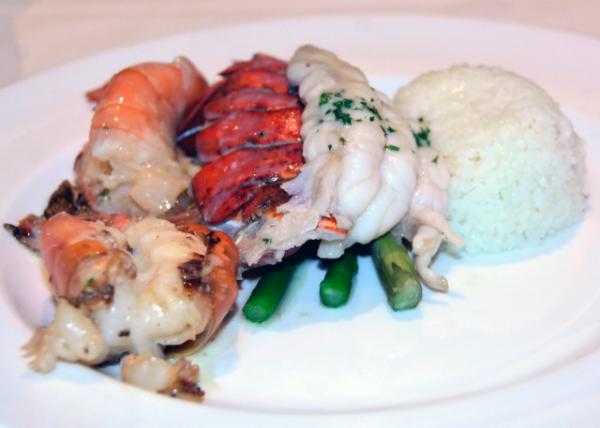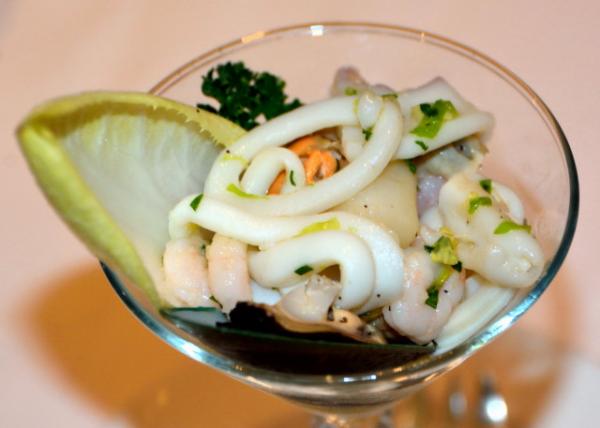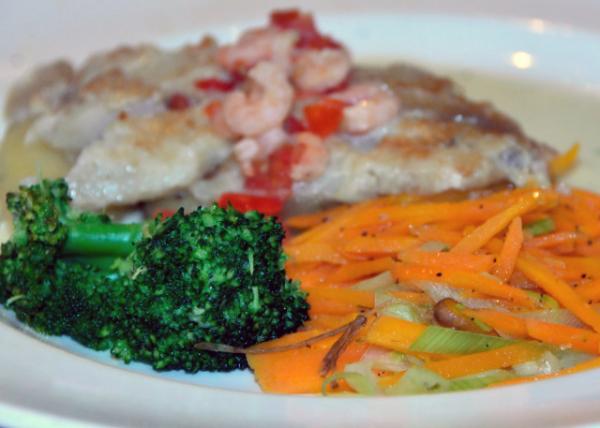| Ancient Ephesus, Turkey(土耳其古城以弗所) |
| 送交者: 天边的红霞 2020年04月27日08:58:08 于 [五 味 斋] 发送悄悄话 |
|
2015-06-18
【Aiden in English】 In ancient times, the city of Ephesus in Turkey stretched a total of 4.3 miles/7 kilometers, bustling more than 300,000 people. As a major trading post with the Middle East, its archaeological sites had rich in the Greek to the Roman history. There were some of the fascinating buildings of the time, for example, the ruined Temple of Artemis, the sacred House of Virgin Mary, and the great Basilica of St. John right up against the Aegean Sea. Now Ephesus isn’t a grand metropolis in contrast to one of the world’s largest jigsaw puzzles approximately 3,000 years ago. Ephesus was invaded at its greatest peak, for many reasons too. First of all, there was Christianity. It was changing the population’s ways of thinking, and having the House of Virgin Mary built a few miles away where Mary was brought here by the Apostle John after the Resurrection of Christ and lived out her days. It was quickly spreading like a wild fire. Word was fast to go around. The next reason was the nearby Cayster River that flew into the Aegean Sea. Ephesus was a hub of trade overseas. Going back to my 4th grade science kit, I’ve learned that a river carries bits of land with it, and also has the ability to plop it where it feels fit. The bits of land are made up of sand, rocks, and very fertile soil. The silt was dumped in the river mouth near the entrance to the Aegean Sea. More and more land came to fill here, forming a delta. It had marsh-like conditions, and the port that used to be connected to the sea now was on dry land. No ships in or out meant no trade. Back in a simpler time, no trade meant no wealth and no wealth meant no power. Finally, Ephesus was next to many conquering armies. Because it’s fertile, many thought that Ephesus was worth fighting a battle for. Ephesus host goddess was Artemis, the Greek goddess of the hunt. The Temple of Artemis was built in her honor and became the biggest architecture on earth in 800 BC. Unfortunately, it was destroyed by an invading army. It was a shame, since now it’s well-known as one of the 7 Wonders of the Ancient World. The place was ideal for a city, locating in a valley with a river nearby. Nevertheless, that wasn’t all. The architecture was top notch, fending off rain water and earthquakes. Ephesus had a large underground system of pipes, carrying out rain water. Brutal, lethal, melting, incinerating, piercing blazing, X-ray like sunshine here was around 90% of the year. For the other ten, however, well let’s just say not even the sky could hold its bladder forever. The pillars of the city needed the strength against earthquakes as well, since the area was sitting near the meeting of two continental plates between Europe and Africa. To give it protection, the metal clamps secured the pillar to the ground, and then molten lead was powered over it to solidify them. It was the technique that is used now, and we use concrete just instead of lead. The advancements didn’t just stop there. Ephesus demonstrated a sign of early recycling. When a block of marble ran out of use, it would be paved into the street. So as I walked down the road, I was probable standing on one of the most expensive pathways ever made in the world. Talk about beautification. For a city so old, the culture, technology, and architecture seem so new. Although the life of Ephesians was different from ours, time can’t change certain things for man. It never had and it never will. 【红霞译文】 从前,土耳其古城以弗所地域横亘四英里多/七公里长,人口高达三十多万,作为通往中东地区的贸易门户,城邦建设浓重地沿袭了古希腊和古罗马传统,在爱琴海沿岸留下为数不少的名胜古迹,譬如:阿尔忒弥斯神庙遗迹、圣母玛丽亚故居圣所、圣约翰大教堂神殿。 如今以弗所已不再是三千年前的繁华都会,昌盛期间由于种种原因一直深受外部势力影响。首先在宗教上,基督教改变了人们的世界观,圣母玛丽亚故居就建在离市区仅有若干英里远的地方,据说玛丽亚在基督复活之后被耶稣十二门徒之一圣约翰带到这里直至魂归天堂,消息如野火春风,很快传遍世间各地。其次在地理上,基士特河流经以弗所附近汇入爱琴海,以弗所因此正好成为海运交通枢纽。早在小学四年级科普教育时就已提到,河水流动会带走陆生杂质,而这些由泥沙、碎石及沃土组成的陆生杂质沿河床随处沉积,爱琴海入海口处淤泥四溢,逐渐形成三角洲,出现类似沼泽一样的盐碱地。连接海湾的港口被陆地取代,船只无法行驶,海上贸易失去运作功能。回到古代那会儿,如果失去对外贸易交流,那么无异于掐断了本地经济命脉;倘若没有钱财收入,势必导致权力丧失。最后在政治上,以弗所屡经血火洗礼,因土地富饶而深陷战争泥潭。 以弗所的保护神是阿尔忒弥斯,即希腊神话中的狩猎女神。阿尔忒弥斯神庙是以弗所人为祭祀狩猎女神而建,号称公元前八百年间全球最雄伟的建筑,不幸的是它毁于战乱,真是奇天大耻,因为阿尔忒弥斯神庙算得上古代世界七大奇迹之一。这一带风水宝地,山谷间河流旁尤其适于建造城邦,然而除了自然优势之外,神庙在建筑水平上实属一流,既防水又抗震,并且地下设有管道系统,可以排放雨水。这里一年四季90%日子里阳光歹毒致命烧心焦化火燎,如同X线穿透力强,剩下的10%则大雨滂沱,连老天爷都自惭形秽。以弗所石柱需要经得起地震考验,因为其所在地恰巧处在欧非大陆板块之间,为了增强稳定性,使用金属钳子才能将石柱牢牢固定在地基上,然后再浇筑溶化的铅液来提高防腐功效,直到今天我们仍在沿用这种技术,只不过改用钢筋混凝土而已。先进的创举绝非局限到此,以弗所还萌发回收想法,报废的大理石被拿来铺垫通道,所以当我漫步其上,没准正踩在迄今为止世界上最昂贵的马路,暂且不谈令人脚下生风的美感。 虽说以弗所是个古老的城邦,但无论在文化技术还是建筑工艺上都发展得相当前沿,那时人们的生活肯定跟现在有所不同,时代造就英雄,这是永远无法改变的事实,以前不会,将来恐怕也不可能。 |
|
|
|
|
 |
 |
| 实用资讯 | |
|
|
|
|
| 一周点击热帖 | 更多>> |
|
|
|
| 一周回复热帖 |
|
|
|
|
| 历史上的今天:回复热帖 |
| 2019: | 第三只眼睛看一带一路 | |
| 2019: | 首页刘强东一地鸡毛的文章,证明我当时 | |
| 2018: | 醒狮| 契约精神vs小聪明 | |
| 2018: | 毛粉团北韩出车祸,家属咋一声没吭尼? | |
| 2017: | 秋念11:西化,将是中华民族最深重的灾 | |
| 2017: | 专家们评估川普新税收计划(译文) | |
| 2016: | 随着床铺不断接近党内提名,媒体也似乎 | |
| 2016: | BBC: 吴弘达遇意外去世终年79岁 | |
| 2015: | 看了阿巫下面贴的那条假新闻,想起微信 | |
| 2015: | 哈哈。这些上海丐帮车模倒是挺可爱的。 | |




